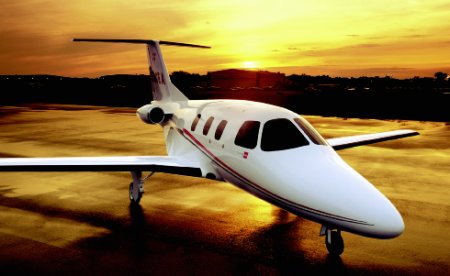Eclipse Aviation's Eclipse 500 very light jet (VLJ) flight-test programme is expected to hit the 750h mark by the end of the NBAA show, and is on track to achieve certification on schedule in March 2006, says the company.

"That's the beauty of having five test aircraft in the programme, which is just about unprecedented," says Eclipse Aviation chief executive and president Vern Raburn. "That's how we're building up the hours so quickly."
Eclipse was expected to bring N506EA, the fifth test aircraft and the second “beta” vehicle, to the convention after appearing at the nearby AOPA show the previous week. The first beta aircraft, N505EA, also recently rejoined the test programme, having been grounded since early September following a wheels-up landing at the company's Albuquerque, New Mexico base.
Eclipse plans to add a skid-plate modification to the belly of the fuselage as a result of lessons learned from the event. "This sacrificial skin will minimize the damage that will occur in an incident like that," he adds. "Overall, it's turning out to be remarkably robust. We're really happy with the way the aircraft is working from the standpoint of reliability," says Raburn.
Tests are also being conducted on drag-reduction features to improve the range of the aircraft and bring it up to the guaranteed specification of 1,289nm (2,370km +/-5%). Although the work may also improve speed capability, Raburn says the Eclipse 500 is already performing well in this area. During recent dive tests, which require a speed during the dive of 15% above Vmo (maximum operating speed), the Eclipse achieved a true air speed (TAS) of over 450kt (830km/h), says the company.
This equates to a 390kt TAS cruise speed, which exceeds the 375kt guaranteed top cruise speed. In terms of Vmo, the Eclipse has already demonstrated a high-speed cruise of 285kt indicated air speed (IAS).
Eclipse CEO Vern Raburn is unhappy with tardy suppliers. Read Murdo Morrison's blog from Orlando.
Source: Flight Daily News























